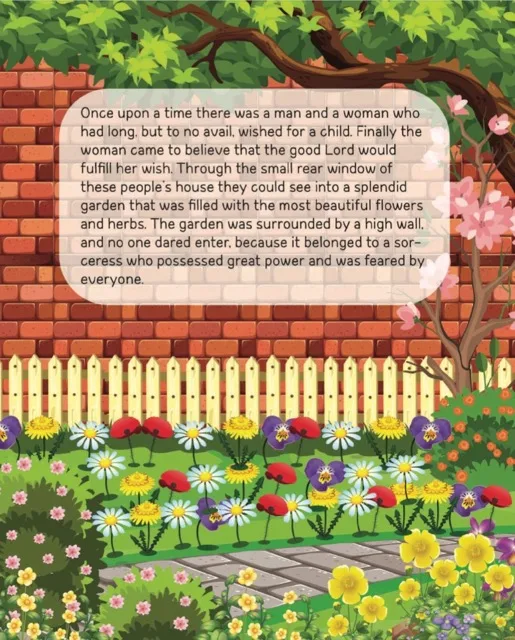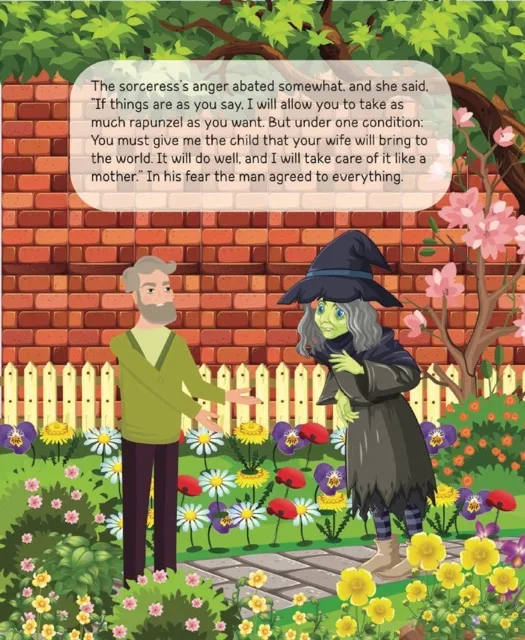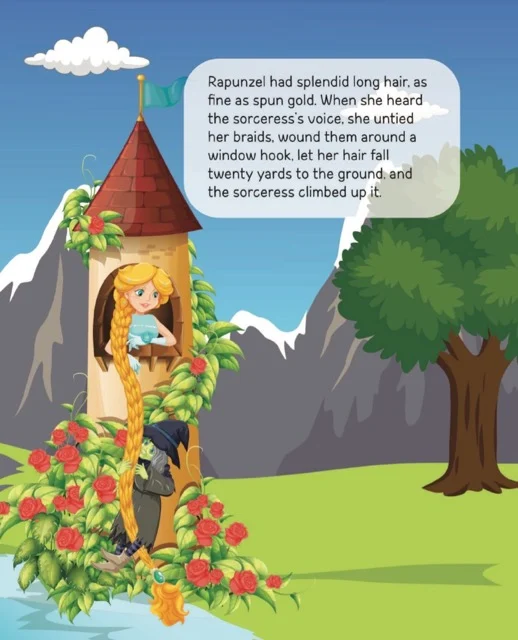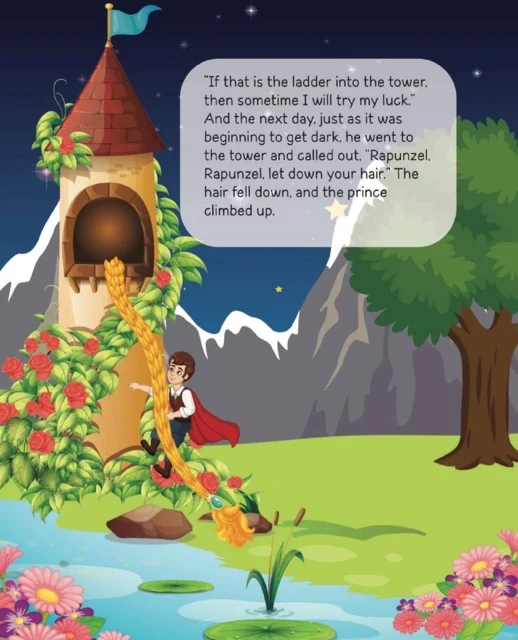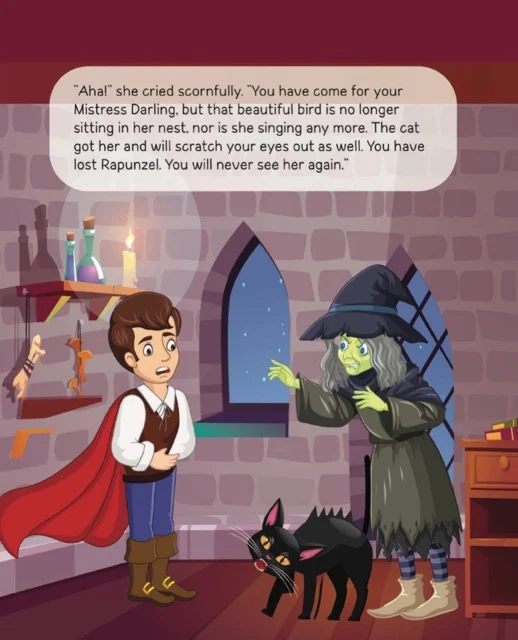Rapunzel: Freedom, Love, and Self-Discovery
Multiple sources—a study guide, a retelling, and a graphic novel excerpt—explore the story of Rapunzel, focusing on key themes of freedom versus confinement, the power of love and hope, and manipulation and self-discovery. The narrative centers on Mother Gothel's exploitation of Rapunzel's magical hair for eternal youth, while floating lanterns symbolize hope and family. Flynn Rider acts as a catalyst for Rapunzel's escape and personal growth, offering a contrasting relationship to Gothel's manipulative control. The sources consistently portray these elements, offering various perspectives on the classic tale.
Rapunzel: Themes and Interpretations
Briefing Doc: Themes and Ideas in Rapunzel Sources
Sources:
●
"Rapunzel Study Guide"
●
"Rapunzel: A Retelling"
●
"Testing Theme: Rapunzel.pdf" (graphic novel excerpt)
Main Themes:
●
Freedom vs. Confinement: This theme is central to the narrative, symbolized by the tower where Rapunzel is held captive by Mother Gothel. The "Study Guide" emphasizes this through essay questions exploring the tower's symbolic duality as both a prison and a space for potential growth. "Rapunzel: A Retelling" explicitly states that Gothel uses the pretense of safety to justify Rapunzel's isolation. The graphic novel depicts Rapunzel's longing for the outside world, visually reinforcing the theme.
●
Power of Love and Hope: Both the "Study Guide" and "Retelling" highlight this theme, connecting it to the floating lanterns that represent Rapunzel's unknown family and fuel her hope for a life beyond the tower. The "Retelling" states, "Every year on Rapunzel's birthday, the King and Queen release thousands of floating lanterns into the sky in remembrance of their lost daughter." The graphic novel depicts Rapunzel's fascination with the lanterns, visually demonstrating their emotional significance.
●
Manipulation and Self-Discovery: Mother Gothel's manipulation of Rapunzel for selfish gain is a key theme explored in all sources. The "Study Guide" defines "manipulation" and encourages analysis of Gothel's character in contrast to Flynn Rider. The "Retelling" states that Gothel "instills fear and dependence in Rapunzel," highlighting the manipulative tactics used. The graphic novel showcases this manipulation through dialogue and imagery.
Important Ideas/Facts:
●
Magical Hair: Rapunzel's hair, imbued with the rejuvenating powers of a magical flower, is a crucial plot device. The "Study Guide" and "Retelling" detail the origin of this magic, linking it to the healing of Rapunzel's mother, the Queen.
●
Mother Gothel's Motivation: All sources identify Mother Gothel as the antagonist, driven by the desire for eternal youth through exploiting Rapunzel's hair. "Rapunzel: A Retelling" clearly states: "Mother Gothel, a selfish woman, wanted to remain young forever."
●
Flynn Rider's Role: Flynn Rider, a thief, serves as a catalyst for Rapunzel's escape and journey of self-discovery. His chance encounter with Rapunzel, described in all sources, leads to a deal that allows her to finally leave the tower. The "Study Guide" suggests comparing his relationship with Rapunzel to Gothel's, highlighting their contrasting motivations.
●
Floating Lanterns as Symbolism: The floating lanterns hold symbolic significance, representing hope, memory, and Rapunzel's connection to her lost family. The "Study Guide" encourages analysis of this symbolism. "Rapunzel: A Retelling" explains: "Rapunzel, unaware of her true parentage, has watched these lanterns...longing to experience their beauty up close." The graphic novel visually depicts this longing.
Quotes:
●
"Mother Gothel isolates Rapunzel to maintain exclusive control over her magical hair and prevent losing access to its youth-preserving abilities." ("Rapunzel Study Guide")
●
"Gothel instills fear and dependence in Rapunzel, making her believe the outside world is dangerous." ("Rapunzel: A Retelling")
●
"Rapunzel's hair's healing powers play a crucial role in resolving conflicts and restoring harmony..." ("Rapunzel Study Guide")
Overall:
These sources provide a consistent understanding of the main themes and key elements of the Rapunzel story. The focus on freedom, manipulation, and the power of hope are consistent throughout, with Mother Gothel's exploitation of Rapunzel's magical hair serving as the central conflict. The floating lanterns act as a powerful symbol of hope and familial connection, driving Rapunzel's desire for a life beyond her confinement.
Rapunzel: A Retelling
Rapunzel FAQ
What makes Rapunzel's hair so special?
Mother Gothel, a selfish woman, wanted to remain young forever. She discovered a magical golden flower that could grant her wish. After the flower was used to heal a sick queen, Rapunzel was born with magical golden hair that possessed the same rejuvenating powers as the flower. Mother Gothel kidnapped Rapunzel to use her hair for her own selfish purposes.
Why does Rapunzel live in a tower?
Mother Gothel keeps Rapunzel isolated in a tall tower, claiming it's for her safety. In reality, Gothel fears losing control of Rapunzel's magical hair and wants to keep it all to herself.
Who is Flynn Rider, and how does he meet Rapunzel?
Flynn Rider is a charming thief who stumbles upon Rapunzel's tower while fleeing from the royal guards. Rapunzel, longing for adventure and a glimpse of the floating lanterns, strikes a deal with Flynn to help her escape.
What are the floating lanterns, and why are they significant to Rapunzel?
Every year on Rapunzel's birthday, the King and Queen release thousands of floating lanterns into the sky in remembrance of their lost daughter. Rapunzel, unaware of her true parentage, has watched these lanterns from her tower window for years, longing to experience their beauty up close. She believes they hold a special significance for her.
What role does Mother Gothel play in the story?
Mother Gothel is the main antagonist. She serves as a possessive and manipulative figure who exploits Rapunzel's magical hair to maintain her youth. Gothel instills fear and dependence in Rapunzel, making her believe the outside world is dangerous.
How does Rapunzel's hair play a role in the story's resolution?
Rapunzel's magical hair not only grants youth but also possesses healing powers. These powers play a crucial role in resolving the conflict and restoring harmony to the characters.
What are the main themes of Rapunzel's story?
The story explores themes of freedom and confinement, the power of love and hope, and the struggle against manipulation and control.
What are the key lessons we can learn from Rapunzel?
Rapunzel's journey teaches us about the importance of following our dreams, challenging limitations, and recognizing true love and genuine connections. It also emphasizes the significance of self-discovery and embracing our true identity.
Rapunzel Study Guide
Exploring the Depths of "Rapunzel": A Study Guide
Short Answer Quiz:
1.
How did Rapunzel's hair acquire its magical properties?
2.
What motivates Mother Gothel to keep Rapunzel isolated in the tower?
3.
Describe the circumstances that lead to Flynn Rider's encounter with Rapunzel.
4.
What is the significance of the floating lanterns to Rapunzel, and how do they connect to her past?
5.
Explain the role of Mother Gothel in the story and her impact on Rapunzel.
6.
How does Rapunzel's hair contribute to the resolution of the story's central conflict?
7.
Identify two major themes explored in the story of Rapunzel.
8.
What lessons can be learned from Rapunzel's journey of self-discovery and challenging limitations?
9.
Based on the graphic novel excerpt, how does Rapunzel initially react to Flynn Rider's presence in her tower?
10.
From the graphic novel excerpt, what event leads to Rapunzel finally leaving the tower?
Short Answer Quiz Answer Key:
1.
Rapunzel's hair inherited the rejuvenating powers of a magical golden flower that was used to heal her mother, the Queen, during her pregnancy.
2.
Mother Gothel isolates Rapunzel to maintain exclusive control over her magical hair and prevent losing access to its youth-preserving abilities.
3.
Flynn Rider, a thief, stumbles upon Rapunzel's tower while escaping the royal guards after stealing a valuable item.
4.
The floating lanterns are released annually by the King and Queen in memory of their lost daughter, Rapunzel. Unbeknownst to her, they represent her connection to her true family and past.
5.
Mother Gothel is the antagonist, acting as a manipulative figure who exploits Rapunzel's magical hair for her own selfish desire to remain youthful.
6.
Rapunzel's hair's healing powers play a crucial role in resolving conflicts and restoring harmony, possibly by healing injuries or reversing the effects of aging on certain characters.
7.
Two major themes explored in the story are freedom vs. confinement and the power of love and hope.
8.
Rapunzel's story teaches us the importance of pursuing our dreams, challenging perceived limitations, recognizing genuine love, and embracing our true identity.
9.
According to the graphic novel excerpt, Rapunzel initially reacts to Flynn Rider with suspicion and fear, capturing him with her hair and demanding an explanation for his intrusion.
10.
The graphic novel excerpt illustrates that Rapunzel decides to leave the tower after striking a deal with Flynn Rider. He promises to help her see the floating lanterns in exchange for the stolen object he is carrying.
Essay Questions:
1.
Analyze the symbolism of the tower in "Rapunzel." How does it represent both confinement and opportunity?
2.
Compare and contrast the characterization of Mother Gothel and Flynn Rider. How do their relationships with Rapunzel differ, and what motivates their actions?
3.
Explore the theme of freedom and confinement in the story. How does Rapunzel's journey reflect a broader human desire for self-expression and autonomy?
4.
Discuss the importance of the floating lanterns in "Rapunzel." How do they contribute to the story's themes of hope, memory, and the search for identity?
5.
Analyze the development of Rapunzel's character throughout the story. How does she transition from a naive and sheltered girl to a courageous and independent young woman?
Glossary of Key Terms:
●
Antagonist: The character or force opposing the protagonist; the villain.
●
Confinement: The state of being restricted or imprisoned.
●
Exploit: To take unfair advantage of someone or something for personal gain.
●
Freedom: The power or right to act, speak, or think as one wants without hindrance.
●
Healing Powers: The supernatural ability to cure illness or injury.
●
Isolation: The state of being separated from others; solitude.
●
Magical Golden Flower: The source of the rejuvenating power that is later imbued in Rapunzel's hair.
●
Manipulation: The act of controlling or influencing someone cleverly, unfairly, or unscrupulously.
●
Protagonist: The main character in a story, often the hero or heroine.
●
Rejuvenating Powers: Abilities that restore youthfulness and vitality.
●
Self-Discovery: The process of gaining knowledge and understanding of oneself, one's character, and one's potential.
●
Symbolism: The use of objects, people, or events to represent ideas or qualities.
●
Theme: A central idea or message explored in a literary work.

